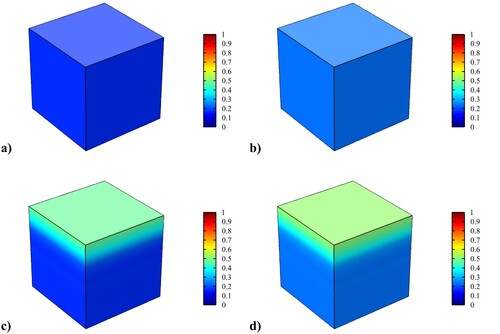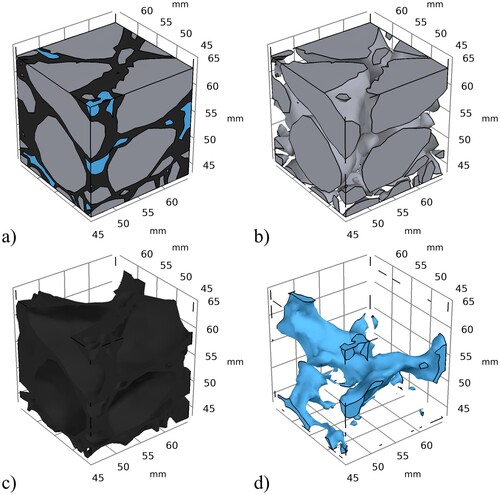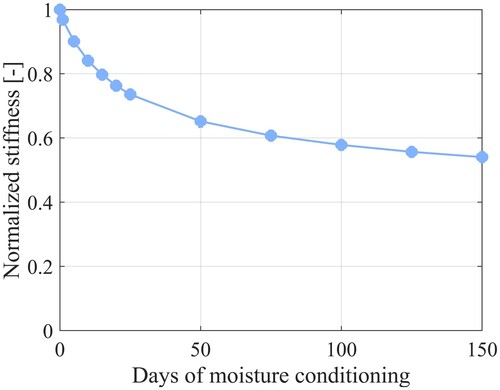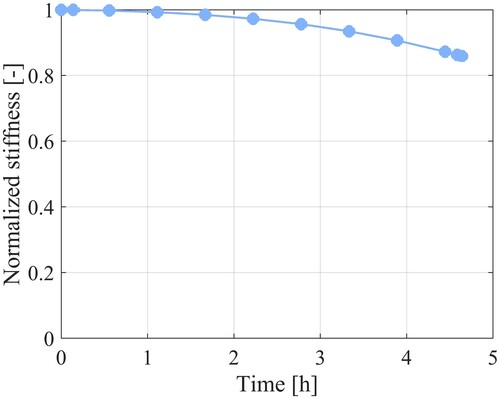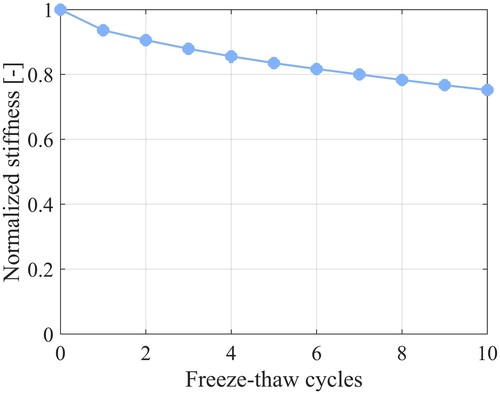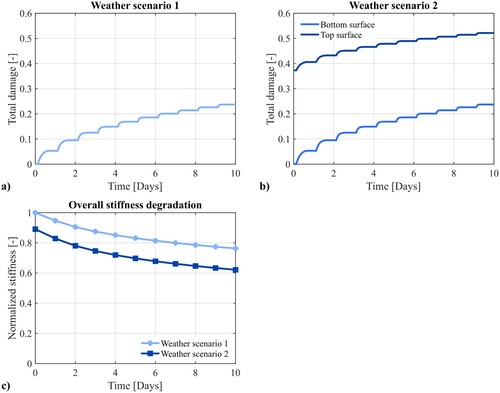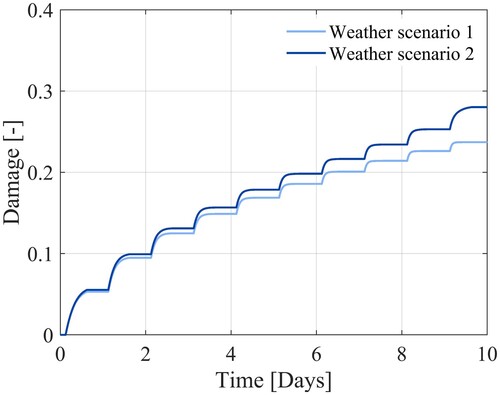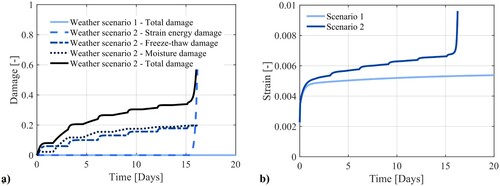Figures & data
Table 1. Summary of the material properties of the components on the microscale (colour online).
Figure 2. Microscale adhesive damage after being subjected to moisture for (a) 10 days, (b) 50 days, and (c) 150 days, and cohesive damage after (d) 10 days, (e) 50 days, and (f) 150 days.

Figure 4. Comparison of the macroscale and microscale predictions of the effective moisture damage evolution.
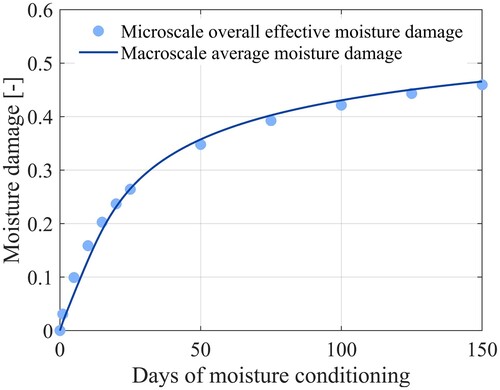
Figure 5. Microscale adhesive damage after being subjected to a creep load for (a) 1000 s (0.28 h), (b) 10,000 s (2.8 h), and (c) 16,800 s (4.7 h), and cohesive damage after (d) 1000 s (0.28 h), (e) 10,000 s (2.8 h), and (f) 16,800 s (4.7 h).
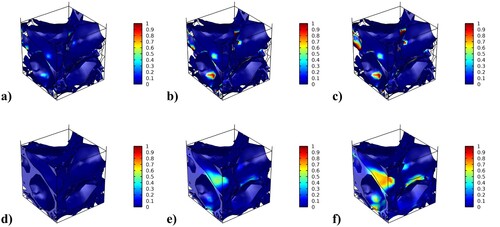
Figure 7. Comparison of the macroscale and microscale predictions of the effective elastic strain energy damage evolution.
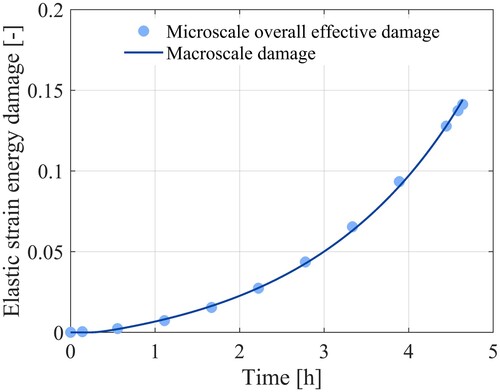
Figure 8. Microscale cohesive damage after being subjected to (a) 2 FTCs, (b) 6 FTCs and (c) 10 FTCs.

Figure 10. Comparison of the macroscale and microscale predictions of the effective FTC damage evolution.
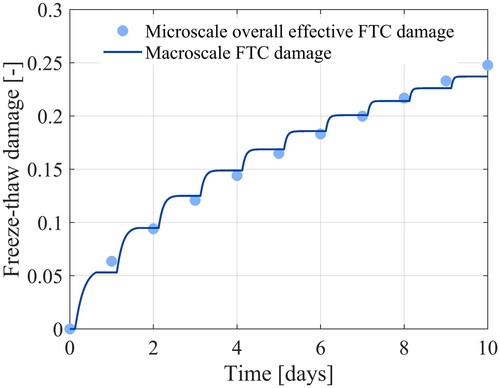
Table 2. Summary of the material properties of the components on the macroscale (colour online).
Figure 11. Damage development in Weather scenario 1 after (a) 5 days and (b) 10 days, and damage development in Weather scenario 2 after (c) 5 days and (d) 10 days.
